Updated: March 2025
Before you shell out a couple of thousand dollars on a new set of clubs, consider working on your core stability for a better return on investment.
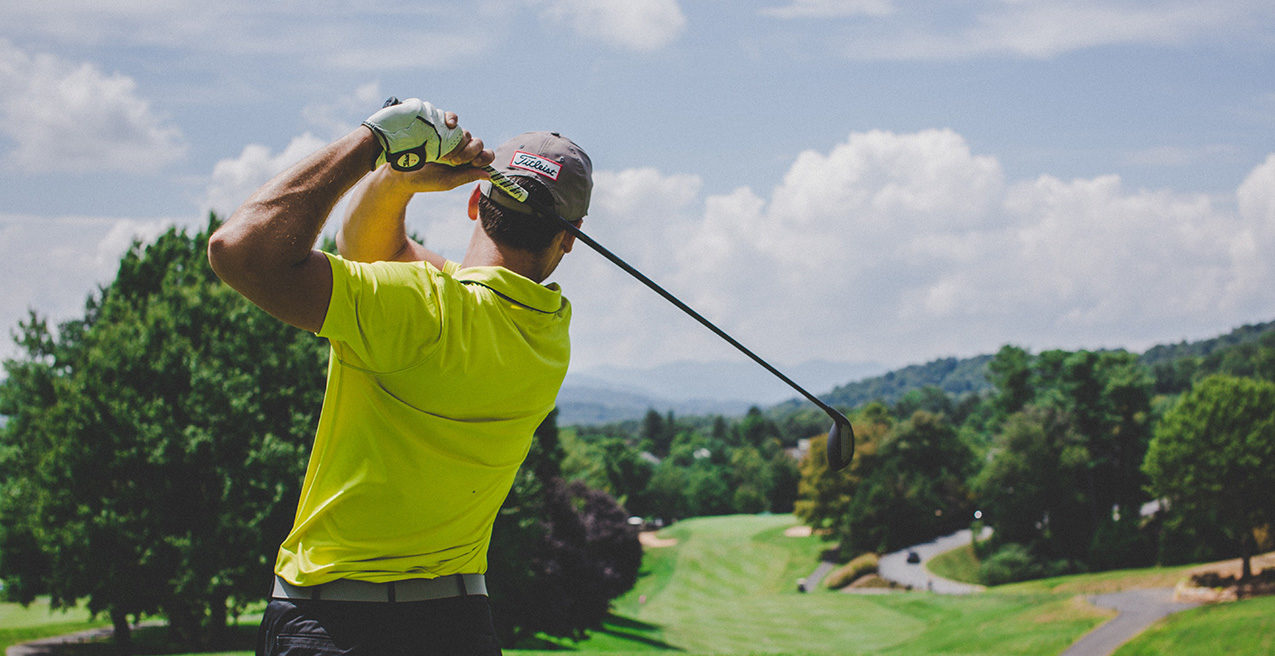
A person’s core area is oftentimes the weakest part of a golfer’s body. Without strong, engaged muscles in your mid-region, (stomach, hips, butt, and lower back), you cannot execute a swing that is powerful and technically sound. Stability in your stance is essential for a good driving technique. With good core stability, you can wind your body and generate the force necessary for distance, without losing the alignment necessary for accuracy.
We’ve put together a list of the best golf core strengthening exercises that you can easily do at home. For training purposes, we have included one key piece of equipment for these exercises: the stability ball. The stability ball helps to activate more muscle groups and forces your entire body to practice coordination and balance as a unified system.
As with any workout routine, consistency is key, but stick with these golf strengthening exercises for at least six weeks and we assure you that you’ll see improvements to your game!
What are core muscles and how do they work?
When we think about core muscles, many assume we are only referring to our abdominal muscles. Although abs are an important part, the muscles of our core actually include all the muscles in the front and back of our body from the waist up to the chest and shoulder blades.
These muscles hold up the trunk of the body and help to keep it stable, strong, and balanced. The best core exercises for golfers target all the core muscles, which builds a balanced strength that improves the power and accuracy of your swing.
If you are struggling to build core strength, or have a past or present injury that is holding you back, book an appointment with one of our experienced physiotherapists who can guide you in the best course of action for your body.
Benefits Of Strengthening Your Core For Golf
Core exercises for golfers improve stability through strengthening, balance, and muscular endurance exercises. The benefits of strengthening your core for golf are:
- Ability to maintain proper swing posture
- Increased consistency of downswing and ball strike
- Improved swing accuracy and precision
- Added power and strength to your drive
- Injury prevention
10 Core Exercises to Improve Your Golf Performance
Work all the muscles of your core to build a balanced strength that will not only improve your golf game but will also help prevent injuries.
As with any new exercise, ease into it to avoid injury and only go as far as your body feels comfortable. If you have sustained or are recovering from a previous injury, speak to one of our physiotherapists to find out how you can build your core strength safely without risking re-injury.
Otherwise, the following exercises are the best golf core exercises to build a comprehensive routine that targets the entire core for better balance, strength and flexibility.
1. Bird Dog
This exercise builds strength in the core and back to help support your body when you swing. It also helps to build the endurance in your core muscles allowing you to keep your back protected, preventing potential injury throughout your full round of 18 holes.
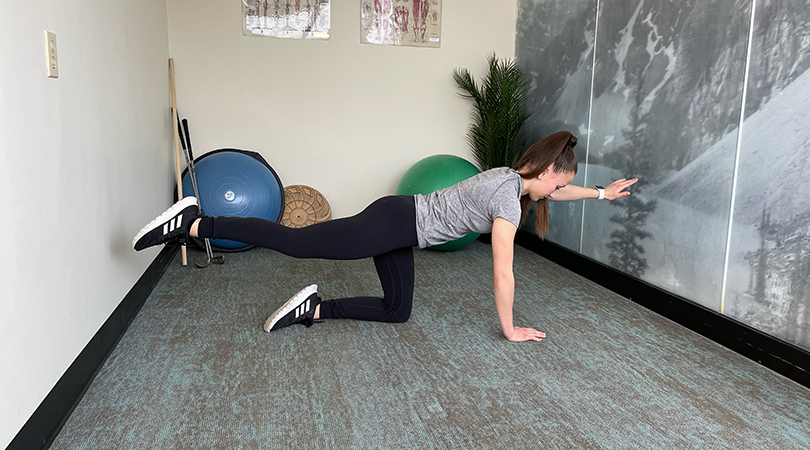
How to do it:
- Begin by positioning your body on all fours (on your hands and knees). The idea is that you will be lifting one arm and the opposite leg into the air, but before you do this you must get your low back and pelvis into the least stressed position, called the “Neutral Pelvis.”
- To get your spine and pelvis in their neutral position, arch your low back towards the ceiling as far as possible and then do the opposite by arching your low back toward the floor as much as possible (similar to the cat-cow stretch in yoga). Now do the best you can to position your lower back in the middle of these two positions. This is your neutral pelvis. It is important to keep your lower back and pelvis in this position throughout the entire exercise. If you lose this position at some point in the exercise, stop and start over again.
- Once you have found the neutral pelvis, keep your head and neck in line with the rest of your spine, tuck your chin in slightly and tighten your stomach to engage your core muscles.
- Lift one arm and point it toward the wall in front of you so that it is at the same height as your body.
- Once the arm is in the correct position, lift the opposite leg and point it toward the wall behind you so that it too is at the same height as your body.
- Make sure you keep your pelvis and lower back in the same position and your core engaged. Avoid twisting your body or trunk. Your back should remain horizontal and flat like a table and your arms and legs reaching as much as they can in opposite directions.
- When you have fully extended your arm and leg, pause for 10 seconds, then slowly bring them down to the floor and repeat with the opposite side, maintaining the neutral pelvis.
- Do 5 repetitions per side.
2. Hamstring Curls with Stability Ball
This is a great exercise that engages the hamstrings, glutes, low back, and ab muscles to build overall core strength that will help improve your golf game.
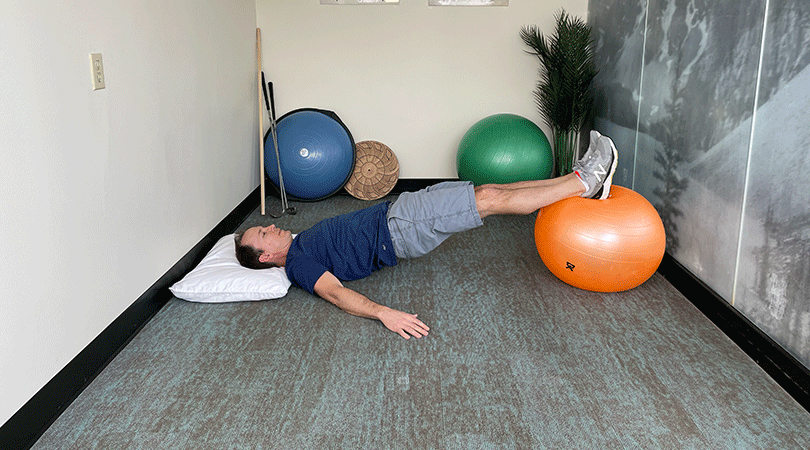
How to do it:
- Lie on your mat, with your hands by your sides (or outstretched for an easier modification), legs straight and your feet on top of the stability ball with your heels pressed into the top of the ball. Engage your stomach muscles.
- Begin by lifting your bum off the ground and raising your hips up towards the ceiling. Tighten your stomach.
- To keep the exercise more manageable, only lift the hips a few inches off the ground. For a more difficult modification, lift the hips higher.
- With your heels, pull the stability ball towards you and bend your knees as much as possible. Keep your core engaged.
- Then roll the ball away from you by straightening your legs. Try keeping your bum off the ground until your legs are fully straight. When starting, you may have to let your bum touch the ground quickly between each repetition.
- Do 2-3 sets of 10 repetitions.
3. Resisted Torso Twists
This exercise strengthens your obliques and spinal rotators (the muscles required to turn your trunk during the golf swing). Strengthening these muscles will increase your rotational power, allowing you to strike the ball with more clubhead speed and increasing your distance.
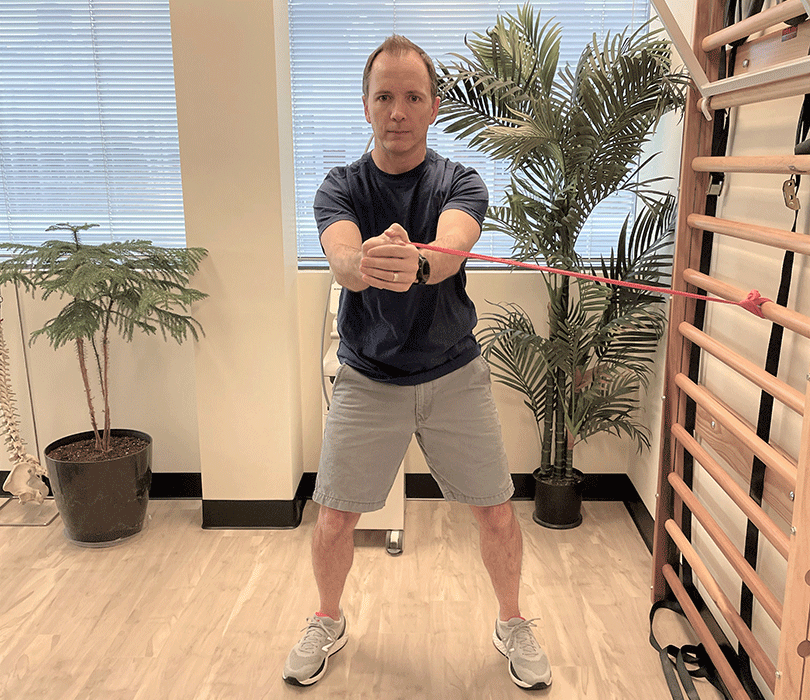
How to do it:
- Have a resistance band attached to something sturdy (tie a knot in one end and throw it through a doorway and close the door) at about chest height.
- Grab onto the end of the resistance band. With your hands together, lift your arms to slightly lower than shoulder height, keeping a slight bend in both elbows.
- Position your body into a golf stance and twist your trunk away from the band as much as possible. Make sure you turn your trunk while holding your shoulders still.
- Once you’ve reached the end of the rotation, then slowly turn your trunk all the way to the other side.
- Repeat 10 times, then turn and face the opposite direction and perform 10 repetitions. 3 sets.
4. Russian Twists With Weight
This is an effective core strengthening exercise for golfers that also works out your abs for better strength and stability.
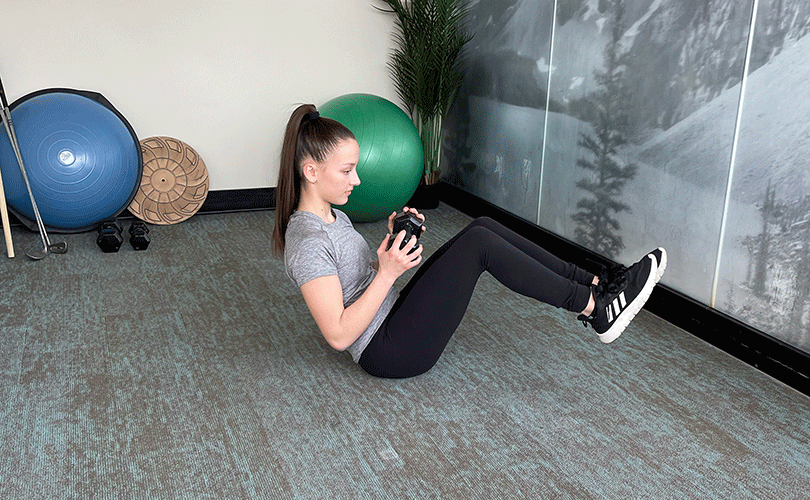
How to do it:
- Sit on your mat with your knees bent and feet flat on the floor.
- Engage your abs and lean back to a 45-degree angle.
- Using both hands, hold the weight in front of you and a few inches off your stomach. You may want to keep your feet on the mat, but a progression would be to slightly lift both your feet off the ground, holding them together.
- Keeping your abs engaged, twist slowly to the right as much as possible and pause for a few seconds.
- Bring the ball and your torso back to the center.
- Make sure you keep your abs contracted and repeat to the left side.
- Do 10 repetitions per side, 2-3 sets.
Another technique, which can be alternated with the above method every second session is to move the ball back and forth quickly, but only an inch or two. Maintaining this movement for 30-60 seconds and performing 3 repetitions.
5. Ab Roll Out
This is one of the more challenging core strengthening exercises for golfers to help build core stability and strength.
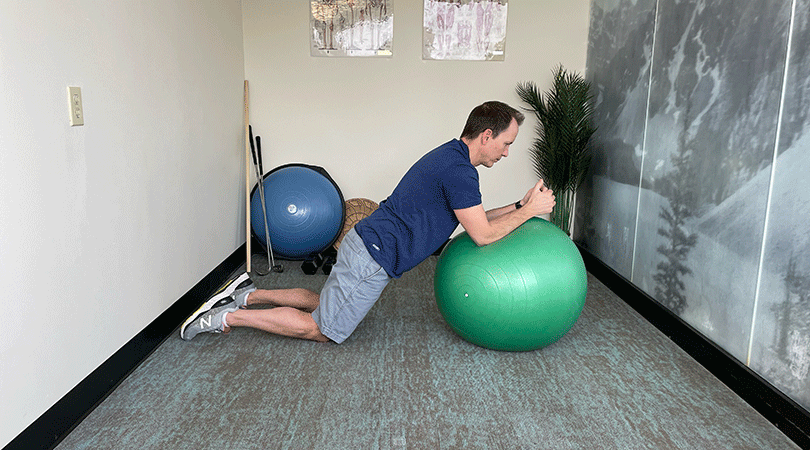
How to do it:
- Begin in a tall kneeling position with knees on the ground, slightly apart and toes firmly planted and flexed so the bottom of the foot is facing towards the area behind you.
- Place the stability ball in front of you.
- Tightly engage your abs, lean forward and rest the ball under your forearms keeping your back straight (don’t let your back dip or arch down).
- Slowly roll the ball in front of you by extending your arms in a straight line away from your body. Continue to keep your abs engaged to prevent your back from dipping down.
- Stop when your back is about to arch or at the point where the stability ball begins to brush your armpits and hold it there for 10 seconds.
- Then, with the same care and attention roll the ball back towards you, bringing your chest upwards and elbows back in line with your shoulders.
- Hold for 10 seconds and repeat 5 more times.
If this is too difficult you can remain in the first position and hold there for 10 seconds, release, and repeat 10 times.
6. Squats
This is a great exercise to increase the strength of your abs, lower back, glutes, hamstrings, and quads, which will help produce the power in your legs, hips, and trunk required to hit the ball long distances.
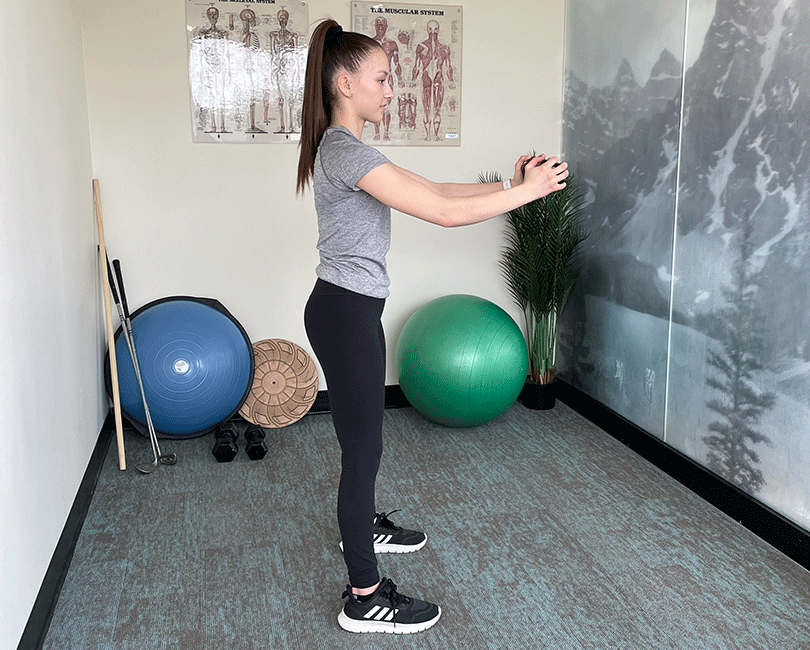
How to do it:
- Stand with your toes pointing forward, feet slightly wider than shoulder-width apart.
- Place your hands out in front of you, away from your body at about face level and tighten your stomach to engage the core.
- Stick your bum out (anterior pelvic tilt) in much the same way you do when addressing the ball. You should feel the muscles tense in your low back.
- Now push your bum backwards. This will cause you to slightly bend forward at your hips and force your body weight onto your heels (which is what you want!).
- Lower your bum to the ground, keeping it pushed back. Try to imagine sitting in a chair and aiming your bum to the back of the chair.
- Maintain the arch in your low back and try to keep your trunk as upright as possible. Don’t let your knees move together. Your kneecaps should stay over your second toe throughout the entire exercise.
- Continue to lower your bum to the ground and stop just before you lose the arch in your back. In other words, do not let your lower back round.
- Then stand tall, maintaining your proper knee and anterior pelvic tilt position.
- Perform 3 sets of 10 repetitions.
You can hold a dumbbell or kettlebell in front of you if required.
7. Monster Squats
This exercise is great to increase a golfer’s ability to stabilize the pelvis and help with the force produced to rotate the hips and provide a quick and powerful weight transfer during the downswing, ball strike, and follow through.
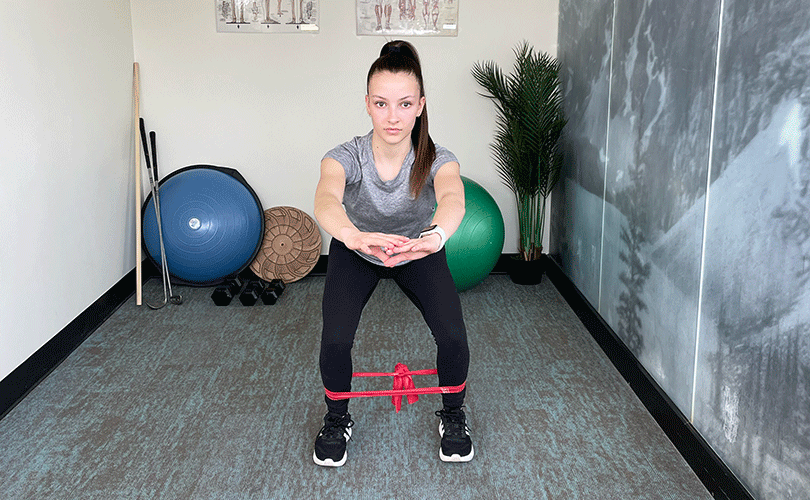
How to do it:
- Tie your resistance band around your ankles. Make sure that the band is tight when your feet are shoulder-width apart.
- Start at one end of an open space or hallway.
- Squat about halfway down (see the previous exercise for proper squatting form), feet shoulder-width apart and toes pointing directly forward.
- Take very small side steps (~2 inches) to the right about a distance of 30 feet.
- Once you’ve reached the end, continue to face the same direction and take small steps to the left.
- Repeat 3 times total.
Make sure to stay low in the squat, keep your feet pointing forward and don’t increase the size of your side steps.
8. Standing Resisted Hip Flexion
This exercise focuses on strengthening your hip flexors which are required for a powerful swing and also strengthens the hip rotators of the weight-bearing leg. This not only helps with hip and pelvic stability but also increases power production with hip rotation during the downswing and when ball contact is made.
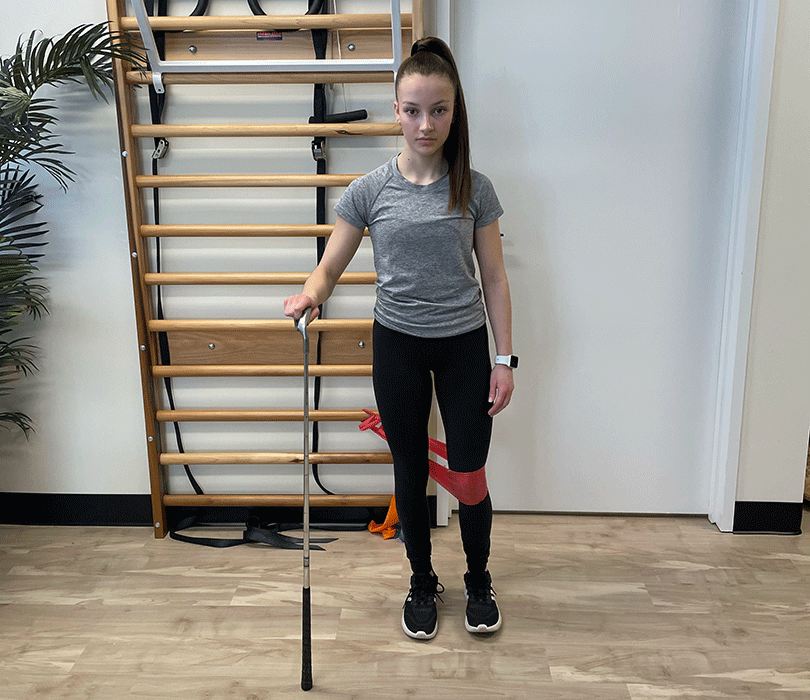
How to do it:
- Loop a resistance band around one of your knees and spread the width of the band over your kneecap. Tie the end of the band to a sturdy object, or throw the knot through the doorway and close the door. Tie the band at knee height.
- Step forward and sideways away from the band so that it is taught.
- Tighten your abs and glutes, and lift your tied knee toward your chest.
- Stop when the hip is bent to 90 degrees.
- Keep your balance and keep your glutes and core muscles tight so there is little to no movement in the pelvis and back. When starting you may have to lightly hold onto something to maintain your balance.
- Slowly lower your leg back down and repeat.
- Perform 3 sets of 10 repetitions on each leg. Alternate legs between each set.
9. Bridging With Progressions
A well-known, but very good exercise used to increase the strength and endurance of your core stability muscles, which include: the abs, glutes, lower back muscles and hamstrings.
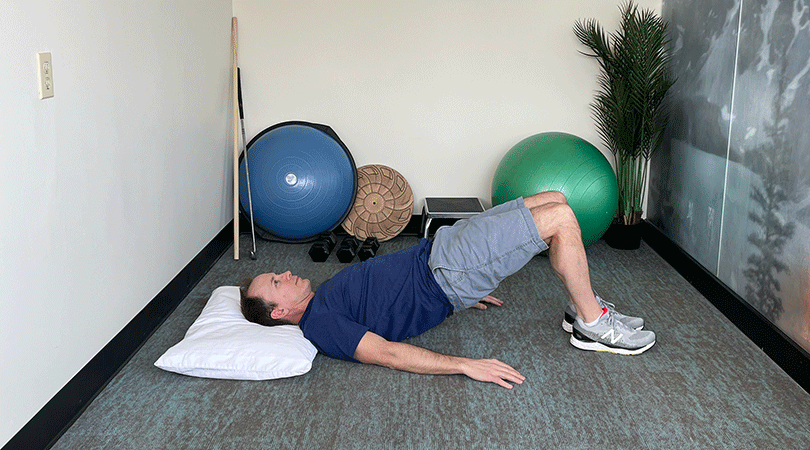
How to do it:
- Lie on your back with your arms spread out on the floor, knees bent and feet flat on the floor, shoulder-width apart.
- Tighten your abs and squeeze your glutes, then lift your bum toward the ceiling. Ideally, lift high enough to make a straight line with your body from your knees to your shoulders. If you are not able to lift this high due to pain, then lift only as high as you can without pain (don’t hold your breath!).
- Hold for 10 seconds and repeat 5 times.
Glute Bridges With Progressions
- Place your feet together when doing the exercise.
- Bring your arms closer to your body or off the floor completely.
- Hold the position for longer, 30-60 seconds.
- Place your feet on a higher surface, such as a stool or step.
- Place a weight on your stomach. Start with 5 lbs. and increase from there.
- Lie on a stability ball positioned between your shoulders.
- Use only one leg, with your other leg straight and off the floor. Make sure you keep your pelvis horizontal and not tilted toward the side of the lifted leg.
You can combine these various progressions to make it even more challenging.
10. Forward Lunge & Twist With Golf Club
This exercise stretches the hip flexors and improves torso mobility while also building strength and stability in the hips, pelvis, lower back, and trunk.
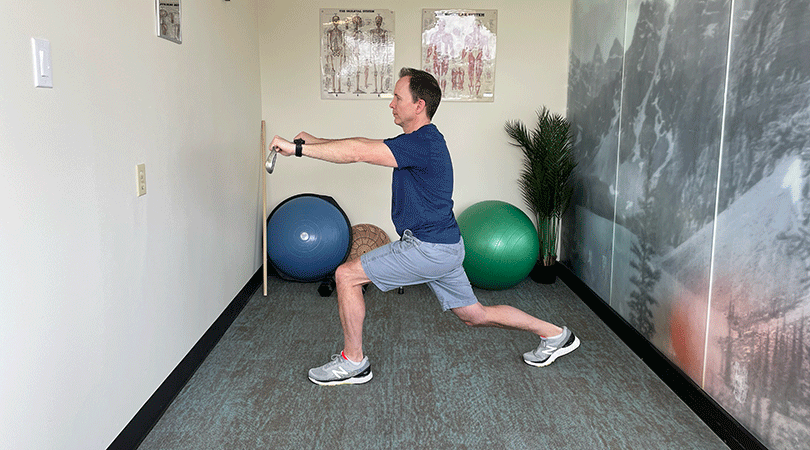
How to do it:
- Begin in a standing position with an upright posture.
- Cross your arms in front of your shoulders while holding a golf club horizontally against your upper arms.
- With your left leg, step forward into a lunge, bend your right knee and lower it to above the ground.
- After stepping forward, do not continue to move your body forward, instead lower your body directly downward and do not allow your left knee to move forward, past your toes.
- Rotate your torso to the left while keeping your body upright and golf club level.
- Rotate back to center and step your left foot back to a standing position.
- Repeat on the right leg.
- Do 10 repetitions on each leg, 2 sets.
When to Start Core Training for Golf?
Start now. Whether you’re new to golf or have years of experience, core strength is foundational to success. Aim for two to three core workouts per week, mixing exercises to challenge different areas of the core.
Be sure to warm up before training and consult a physiotherapist if you have any pre-existing injuries or pain.
Need help perfecting your golf swing?
Whether you’re looking for assistance on the above exercises or are eager to heal a golf injury, book an appointment today! We’re here to help you get back to feeling better — fast!
As a reminder, no doctor referral is necessary to book an appointment.
